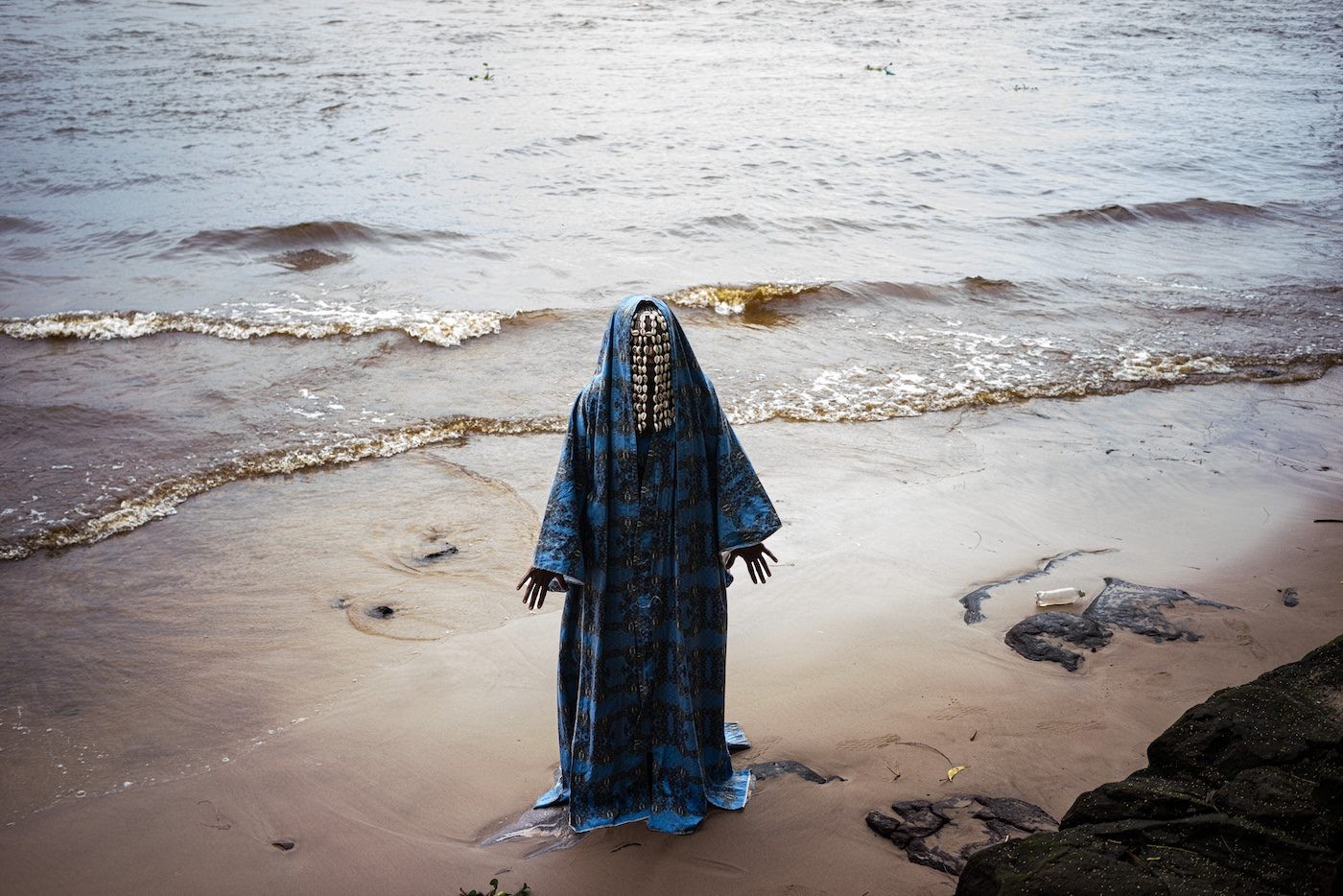Thoughts on Collective Archives

21 September 2022
Magazine C& Magazine
Words Mearg Negusse
11 min de lecture
The collectives Hambre, Kayfa ta, Jatiwangi art Factory, and the Black Archives discuss perspectives on collective publishing and archiving.
During documenta fifteen, a roundtable conversation took place with participants from the lumbung of publishers and two collectives from the C& project #weavingnetworks: On paper, in places. Afterwards, C& invited the speakers to write down their thoughts to capture the essence of their stimulating debate.
Hambre is a lesbian publishing initiative from Chile.Kayfa ta is a non-profit Arabic publishing initiative that uses the popular form of how-to manuals. Jatiwangi art Factory is an Indonesian communal project linked to Jatiwangi’s industrial working-class background.The Black Archives document the history of Black emancipation movements and individuals in the Netherlands.
Contemporary And: What is the mission of your respective collectives and is it reflected in the names you chose for them?
HAMBRE: Our name means “hunger” in Spanish. When we created our lesbian initiative back in 2019, we were cooking a seafood soup and realized that publishing was not that different from cooking. You gather the ingredients, mix them up, collaborate, and create something delicious to share with others. We are hungry for publications that speak about our experiences, hungry for women, queer, and non-binary queer artists, writers, poets, photographers, translators, and editors. We want to choose our words and spread them.
The Black Archives: Our mission is to educate the community on hidden histories, to start those uncomfortable conversations that are needed in this community. In a political sense “the Black Archives” says it all. It relates to the Black Diaspora in the Netherlands and the rest of Black Europe.
Jatiwangi art Factory (JaF): Our collective is located in the middle of the rooftile industry of Jatiwangi, literally in the building of a factory owned by our founder Arief Yudi’s family. The people of Jatiwangi have been living the life of terracotta culture for more than one hundred years. Founded in 2005, not so long after the beginning of the post-Suharto era in 1998, JaF was built to offer art and culture as a way of negotiating life among industrial production and factories. The people of Jatiwangi only know how to work hard because the landscape is very industrial. What is also important to us is the definition of art with a small “a” instead of a capital one, thus not as something noble or grand. To us art is part of our daily activities, it has been used as one of the main tools to respond to our contemporary situation.

Kayfa ta publications. Courtesy of Kayfa ta.
Kayfa ta: Kayfa ta was founded in 2012 by Maha Maamoun and Ala Younis. Our name means “how to.” Every day we express a need to think differently about the tools of communication and experiences that we have – the bodies we inhabit, the houses, communities, geographies and histories that shape and are shaped by us. While how-tos are most commonly used to transmit technical and practical knowledge, we wanted to commission and publish a series of manuals that attempt to open up a space for a different kind of reading and readership. Kayfa ta wants to approach practitioners like artists, theorists, inventors, urbanists, builders, farmers, filmmakers, and writers to discuss the urgency of the moment. Issues and situations that would benefit from a specific “manual.” The publishing interest grew as we advanced in time, and we created new sub-series such as Howdunnit, which summons literary and archival research to the investigation of crime and how its narratives are constructed, obfuscated, or dismantled. We want to know how its gaps are filled or purposefully left open, its evidence gathered, its cases closed or left to stare back at us across time.
C&: How does your publishing process reflect the specific local conditions and structures in which you work and live?
HAMBRE: In the past 10 years we have lived through many protests, repression and, now, times of change and hope. We are inspired by the social movements in Chile and Latin America that work and organize tirelessly to change this social, political and economic system that prioritizes economic gain instead of the well being, dignity and happiness of the people. We are also very inspired by the feminist movements and lesbian activism that holds us in a tender, radical and political international network of resistance. For us, publishing is one of our ways of collaborating in social change.
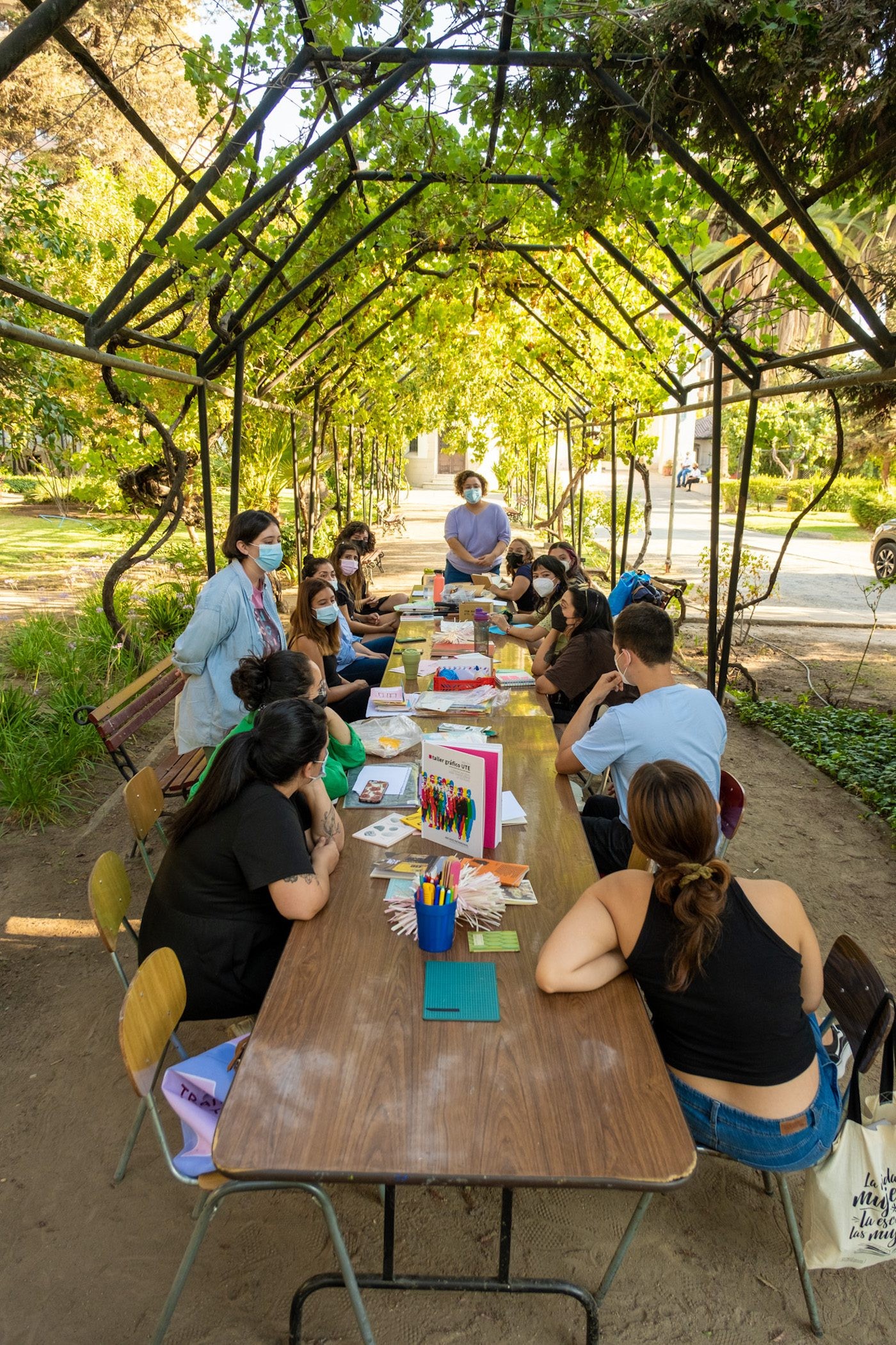
Hambre at work. Courtesy of Hambre.
The Black Archives: Our publishing comes in many forms as we are not your typical archive: we post on all our socials, have a monthly newsletter, we organize events, exhibitions on topics that are relevant and reflect the current position in which our community finds itself. In 2021 we published our first anthology, a collection of essays from the community based on the thoughts of Surinamse freedom fighter Anton De Kom.
Kayfa ta: Our research engages questions on copyright, self-censorship, partnering with street vendors, and infiltrating publishing houses’ established monopoly over distribution networks in Arab markets. Publishing houses were not interested in a single monograph sold for one, two, or three euros, which meant we needed to grow as a series or publish every three monographs together. The distributors’ share of sales would not have covered the costs of distributing a single book. We therefore sold them directly to bookshops, carried them in batches in our cars, and transported them in our own luggage.
Jatiwangi art Factory: Jatiwangi art Factory doesn’t really work with publishers. We live and work as a society in the middle of the Global South working class of Jatiwangi. But we pursue some publishing projects as archiving. One of them is called Terracotta City, a proposal and negotiation from and with the community to protect and revitalize Jatiwangi’s terracotta area, resisting new kinds of industrial forms that don’t relate to existing cultures and the knowledge of the people. The publication Terracota City records all our processes – all negotiations with the local government, cooperation with many parties, collaborations with artists and architects, and many things related.
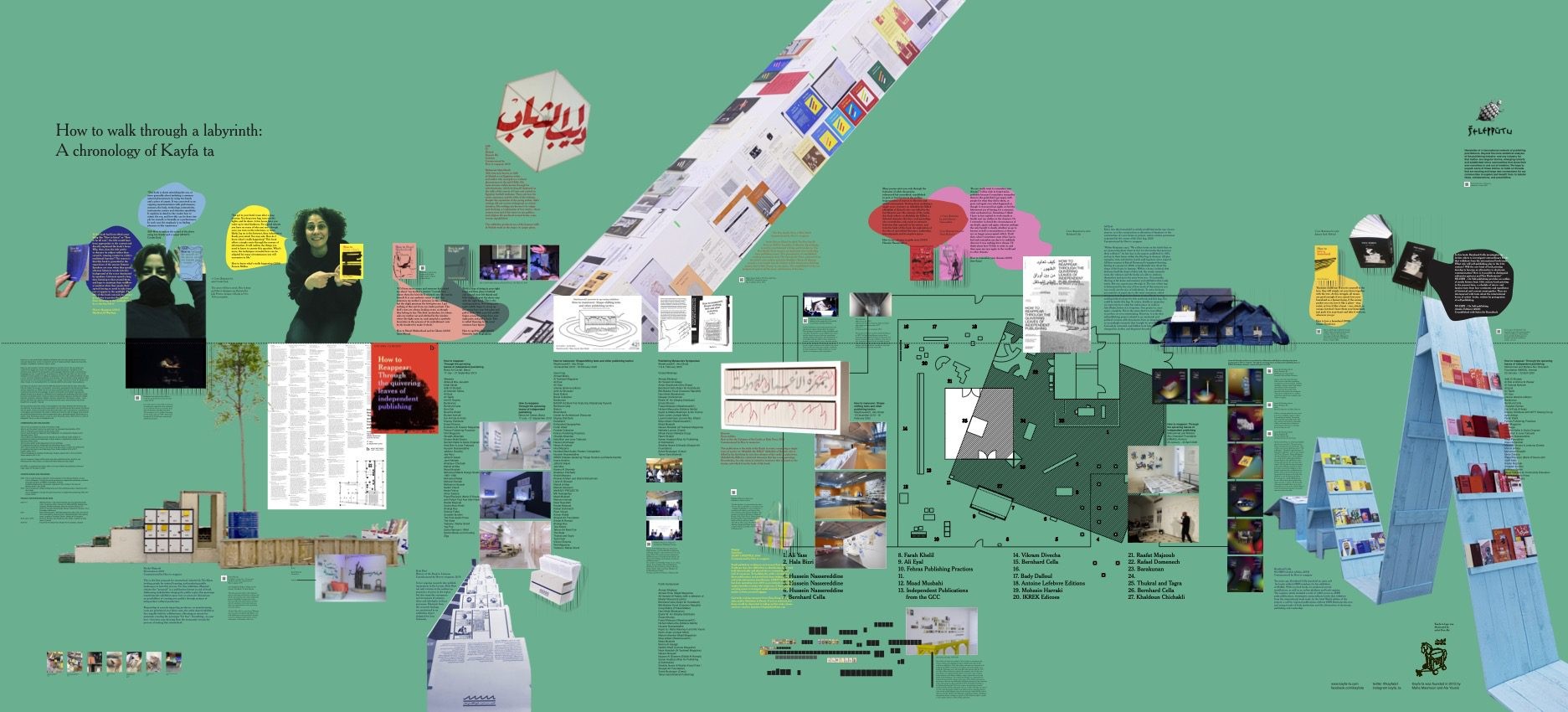
Kayfa ta timeline. Courtesy of Kayfa ta.
C&: How is your collective funded or supported?
HAMBRE: We are currently supported by selling our publications. We try to see to it that each edition finances its reprint. We print using the cheapest digital-printing method we can find, with recycled paper and black ink. Our editions range from fifty copies to 250, which allows us to finance the work we wish to spread and to pay our authors. Since we exist in this gray area of zines and art publications, it is very hard for us to find state funding, so it’s up to us and our community to keep creating opportunities for encounter, dialogue, reflection, and circulation of publications in Chile.
The Black Archives: We create funds by organizing events as well as producing and curating our own art exhibitions that include archival materials. Our first exhibition made an impact on the cultural sector. In 2019 we won the AFK award, the biggest art prize in the Netherlands. It was then that we realized we were birthing an archive. Educators were ringing our doorbell and emailing, asking to visit an archive that wasn’t really an archive yet. We set a price and started giving tours to university students, art schools, and tour groups coming from abroad and to educate companies’ workers on diversity and Black history. Once a month we also give a public tour. In 2021 AFK granted us funding to produce four exhibitions over the next four years.
Kayfa ta: We wanted to use our practice as artists, redirect some of the production grants we receive, and effectuate our networks to grow out of these structures. Through a transitional phase of partnerships and fundraising, we managed to kick-start a semi-independent production model from the returns of our sales. As we were approaching book publishing and distribution through our alternative art production and distribution networks, a window of opportunity opened for bringing in and sharing the work of diverse writers, known and unknown in the regional book market. We were challenged by the formal and profit-oriented constraints of the conventional book industry, however. As for editorial choices, the new series, Howdunnit, was born out of an invitation to edit a volume on archives. We felt that the crime-novel genre would carry the new series, so we used the invitation budget to commission, design, and print this experiment, which we hope to expand.
Jatiwangi art Factory: It isn’t easy to define what Jatiwangi art Factory is. We don’t really fit the definition of an art collective, or community organization, or NGO, or another kind of Indonesian civil organization. The only certainty is this: we work and live as a big family. The position of “in between” puts us in a very flexible system of support. Especially during the first years we really depended on the support of neighbors, family, and friends – although the currency wasn’t always money. Some neighbors support us with lodging and food for our guests, some artist friends support us with self-funded involvement in our projects, some family members of Arief support JaF with electricity, and some members support us by working collectively for “free.” We are also always ready to be involved in our neighbors’ events and needs, to support our friends, to work in common, to share resources and space. We haven’t really secured fixed funding to support JaF as an institution. But we’ve got support for several projects from different parties.
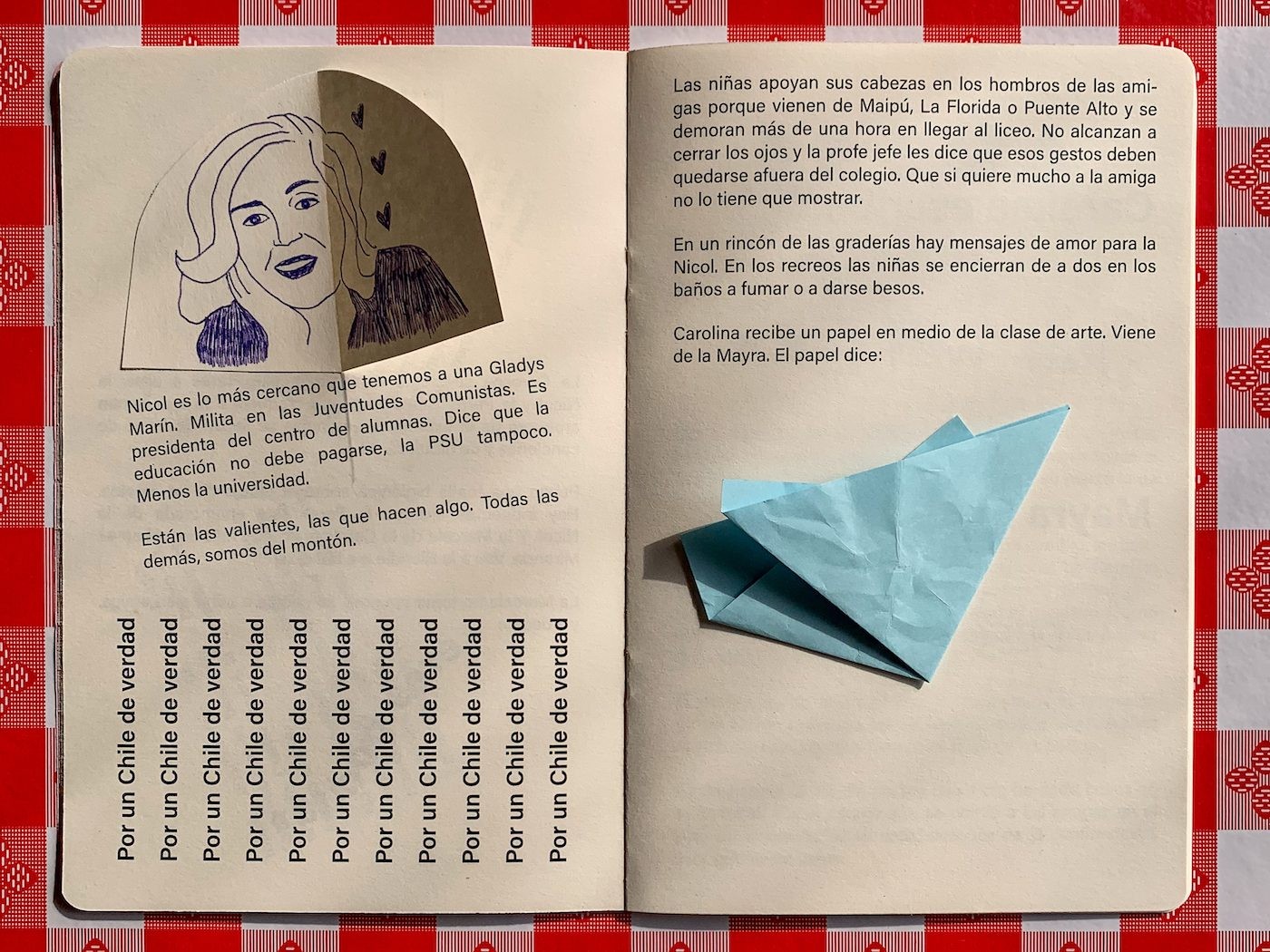
Hambre publication. Courtesy of Hambre
C&: What are your forms of archiving and how do they reflect and shape the ideas, questions, dialogues, or critical thinking you have as a collective?
HAMBRE: Archiving is a fundamental process because it is a way of gathering our process and dialoguing with our past, present, and future. When we have questions and not many answers, we dive into our archive to find ideas, formats, and experiments. In the past year we also used our archive to show the process of the becoming of a publication. This was particularly helpful when we did workshops because it allowed us to demonstrate that the process of creating and reproducing a zine was rarely linear.
The Black Archives: Archives are usually only accessible for academics. We share our Huiswoud Collection with the Schomburg Center for Research in Black Culture in New York. We traditionally catalogue and archive for consistency. After the first archiving processes, we noticed that the collection was not categorized and not really accessible to our community. This raised the question of how we wanted the archive to go forward. In 2021 our intern Richard Weaver designed an archival digital database for protest signs we collected during the 2020 BLM protests. The archival process was completed by volunteers, and we launched our digital archive on the remembrance day of BLM. We want to be an archive that allows the community to participate in the process.
Kayfa ta: Our research questions and publishing methods led us to curate three exhibitions exploring the significant work of individuals, collectives, and institutions in the field of alternative art and publishing practices, past and present. We expanded from the production of a series of pocket-sized experimental how-to books to exploring publishing as an artistic and curatorial practice. We presented How to reappear: through the quivering leaves of independent publishingas a multidisciplinary exhibition and public program on alternative publishing practices in Beirut and Amman. We also participated in an exhibition, a publication, and a symposium in Abu Dhabi during the same period. We titled the endeavor How to maneuver: Shapeshifting texts and other publishing tactics. And we used the space of the publication to document and present some of the research and encounters that resulted from our trips and meetings.
Jatiwang art Factory: Archiving in the form of publications is very important for us, not only as a reflection on the whole process of artistic practice, but also as the act of bravery that is explaining and defining our practice. This kind of publication allows the public outside Jatiwangi to engage with our work and the discourse we propose. Through this we try to enrich the narratives of the community and social movement with perspectives from within the community, instead of limiting them to an academic level.
The project #weavingnetworks was developed by C& with the ifa (Institut für Auslandsbeziehungen) and the Swiss Arts Council Pro Helvetia as cooperative partners. Pro Helvetia also supports the lumbung of Publishers.
Interview by Mearg Negusse.
Plus d'articles de

Fantômes et images en mouvement : le Black Atlas d’Edward George

Maktaba Room: Annotations on Art, Design, and Diasporic Knowledge
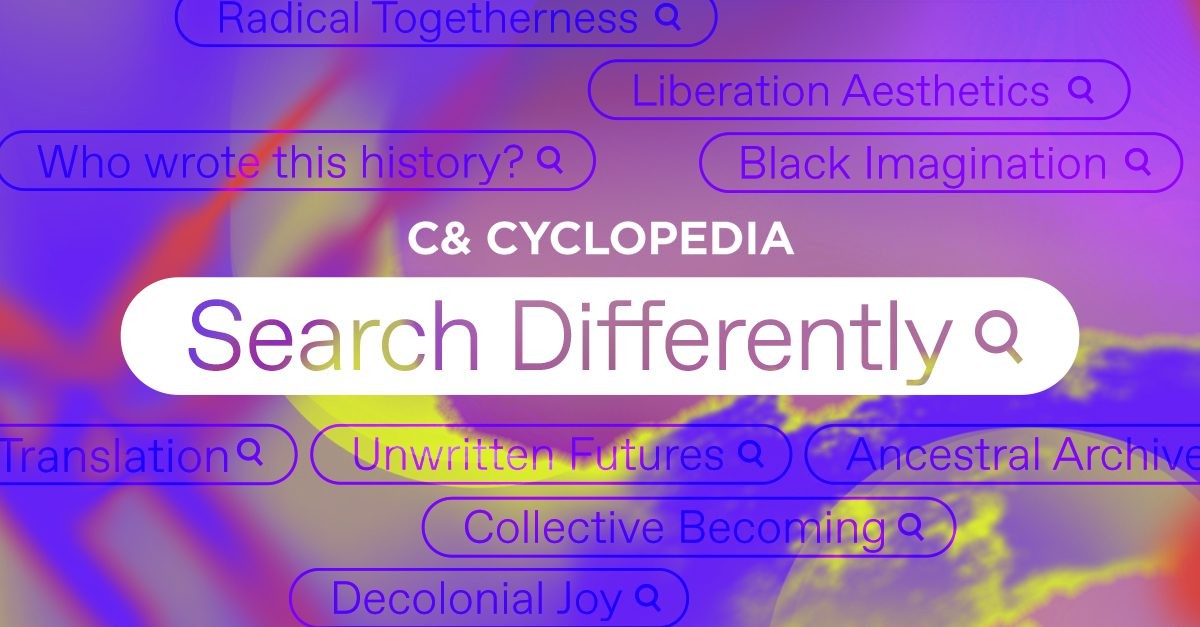
Présentation de la C& Cyclopedia
Plus d'articles de

Irmandade Vilanismo: Bringing Poetry of the Periphery into the Bienal

I Am Monumental: The Power of African Roots
